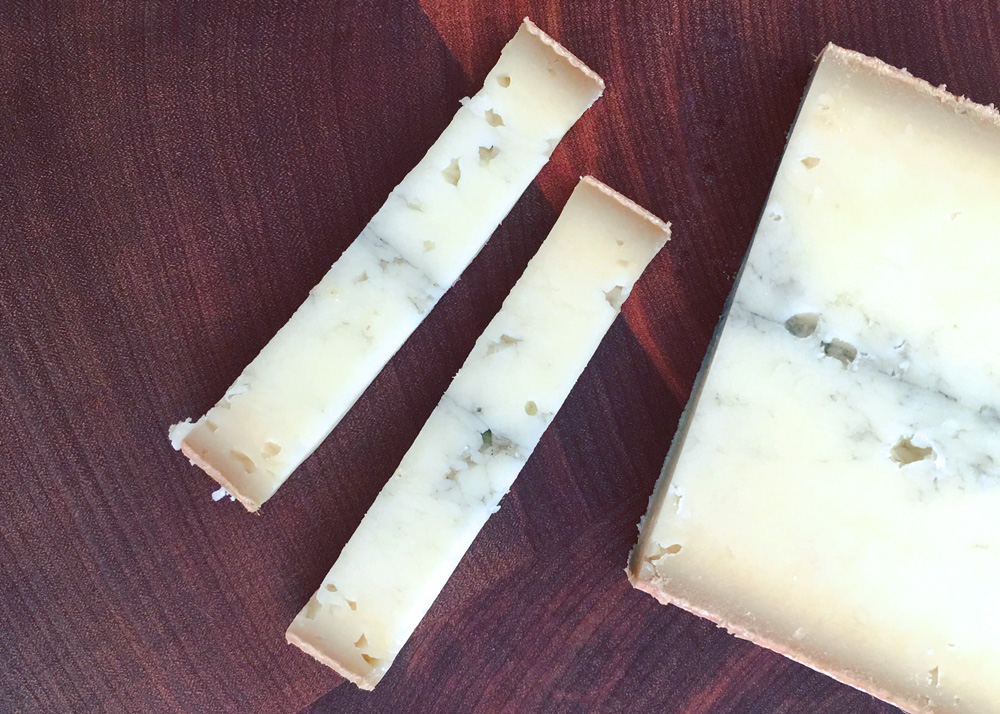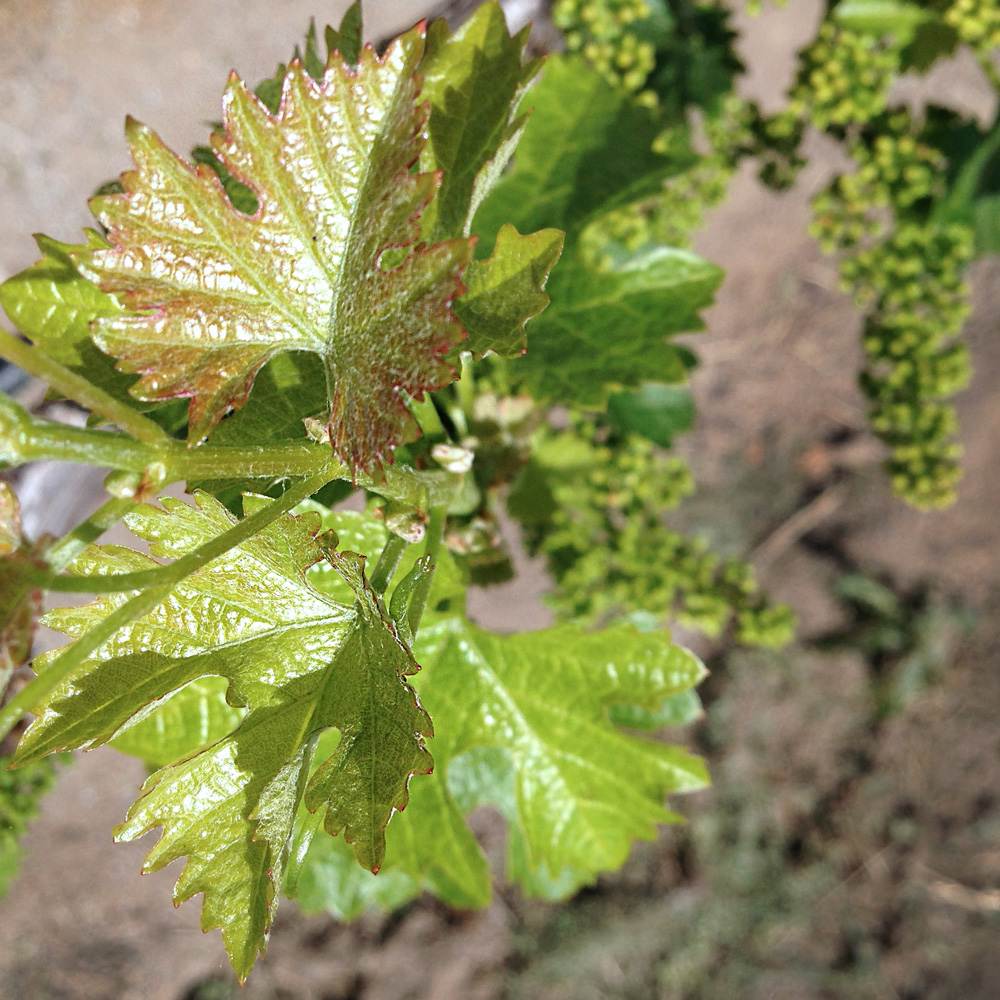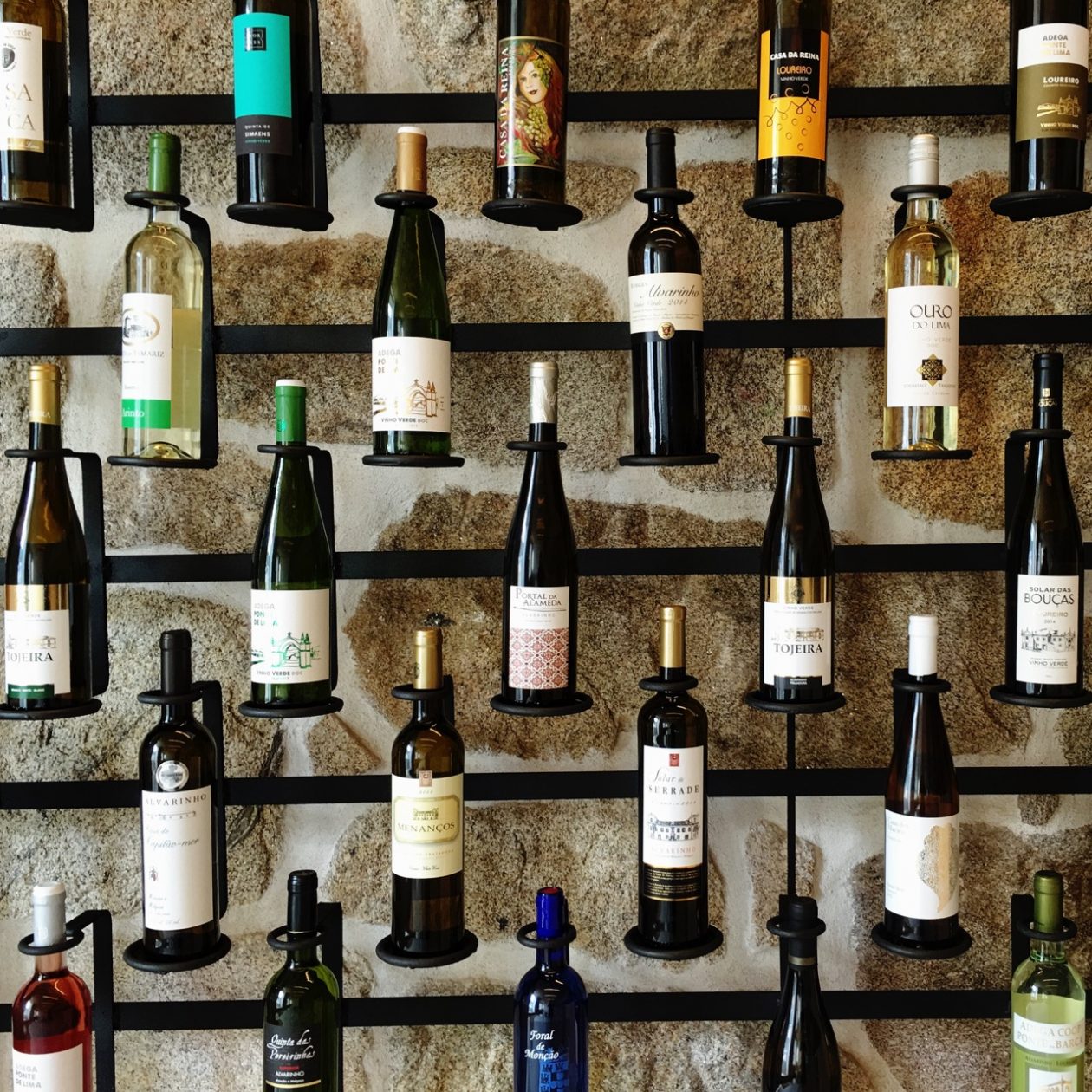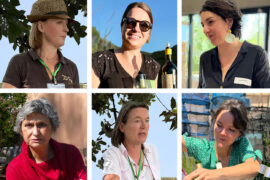
Wine is a product, but it’s also the result of a process. It’s grown and made somewhere by someone’s hands. We like to imagine this place and this person as we drink, to consider the origin story of the wine even as we play our own role in its denouement.
This is why wines marketed as “artisanal” catch our imaginations — and fetch a premium price; ditto “handmade,” “craft,” and “naturalist.” These words conjure images the maker in her vineyard, shepherding a wine from grape to cantina to glass. It fixes the wine and its making into a time-honored storyline in which we, too, play a part.
But the word “artisanal” has become overused. A tiny garagiste might call his wines artisanal. So might a mammoth winery. We’ve applied the word so liberally and casually we’ve drained it of meaning. Many in wine discourse want to bury “artisanal” forever.
I don’t. I think the word has merit and should be preserved. But reclaiming it obliges us to define it, to pencil boundaries around it and the other modifiers that explain how and why a wine was made.
For inspiration I look to France. But not to French wine — to French cheese. Bear with me.
Learning from the French
France’s Appellation d’Origine Protegée system classifies cheeses like Camembert, Comté, Roquefort, Époisses, and Valençay according to region, milk type, and production technique. Within these classifications are the following four descriptions that reflect the cheese’s provenance, viz., where it was made, and how:
Fermier — The cheese is made on the farm where the farmer resides with his or her dairy animals. No purchased milk is allowed. The milk must be raw, and the farmer must follow cheesemaking methods traditional to the regional type. Production is small-scale, limited by the farm’s capacity. Regional synonyms for fermier include buron and chalet d’Alpage for mountain cheeses made in Alpine huts.
Artisanal — The cheese is made on a farm using locally sourced milk, sometimes mixed with milk from the farm itself. The cheesemaker follows traditional regional methods. Production is limited by the scale of the cheesemaker’s operation, hence is often small.
Coopérative — The cheese is made at a facility that pools milk from members of a dairy cooperative. Production can be large scale but is not necessarily so. In the Alps of Switzerland and the Jura of France, the term used is fruitière (which, interestingly, is also applied to cooperative wine production: fruitière vinicole).
Industriel — The cheese is made using milk purchased from anywhere, often far from the production facility. Processing is industrial, and production can be large scale.

This French classification system takes into account a cheese’s origin and manufacture, using place and human activity to draw the boundaries around each definition. Both location and producer — and by producer I mean the dairy animals as well as the cheesemaker — are positioned at the center of the frame. The philosophy is geographical, taking into account regionality plus human practices and processes in classifying the finished product. Significantly, the code helps ensure the future of France’s traditional cheeses by preserving valued historical forms. The system, in short, codifies terroir, which at its foundation is a dialogue between place and making.
The system also tacitly acknowledges the varying types and levels of risk incurred by each approach. The farmhouse cheesemaker assumes the highest risk. She must husband her animals, manage her facilities, and modulate her response to nature’s forces all while working within the strictures of regional cheesemaking tradition and law. The cooperative model, meanwhile, spreads risk across its members. Industrial cheese producers arguably have the most buffer against risk, but they also must make significant investment in facilities and infrastructure and are wholly dependent on a continuous supply of milk from other entities (France is currently enduring a milk shortage).
It’s critical to note that these classifications do not specifically address the quality or deliciousness of the finished cheese. A farmhouse cheese isn’t necessarily tastier than an artisanal cheese; a cooperative cheese is not necessarily better than an industriel. And anyway, the rules allow the AOP cheeses to be produced in various ways: You’ll find Beaufort, for example, in fermier, chalet d’alpage, coopérative, and industriel editions; Comté, meanwhile, is always coopérative; Roquefort is never fermier. The French classifications principally focus on scale and regionality versus the organoleptic qualities of the finished product.
Even so, farmstead and artisanal cheeses are preferred by turophiles who value evidence of seasonality and the thumbprint of the maker. Farmstead cheese is inherently local cheese; it allows locality to shine through in the cheese’s finished taste, smell, and texture. Lack of pasteurization is another amplifier of terroir, allowing the neighborhood microbial community to influence the finished product. Seasonality, too, is part of the expression, because cow’s milk cheese is yellower in the summer than in the winter as carotenoids in fresh grass, which are absent in dried hay, make their way into the milk. That deep color of summer cheeses is prized by those who value knowing when the cheese on their plate was made. Similarly, terroir differences from one hillside to another give cheeses unique personalities, as do variations in equipment, method, temperature, and other environmental factors leading to a producer’s house style. Small production showcases these differences, while industrial production dilutes them into homogeneity. Variation is not only a natural but a highly desirable outcome in a terroir-driven product.

Still, France’s AOP system remains far from perfect. It is strict, restrictive, and top-down, a legal code that leaves little room for innovation. This is both its beauty and its main limitation: It ensures the continuation of traditional and historical forms, while also tying the producer’s hands. A cheesemaker in the Savoie cannot make Brie. He could attempt a bloomy cow’s milk cheese (provided the microbes in his cave cooperate), but he cannot label or sell it as Brie. To produce an AOP cheese, a cheesemaker has limited creative latitude, which is circumscribed by both tradition and law.
The prescriptive nature of this system seems anathema to many outside France, especially in North America where labeling rules are looser and tradition is not as strictly codified. Nonetheless, these French terms have successfully emigrated to the U.S., Great Britain, Australia, and elsewhere and become assimilated into the English cheese vernacular. Cheesemongers and makers refer to farm-made cheese as “farmstead” or “farmhouse,” while a cheese produced by a smallholder with purchased milk is “artisanal.” Those produced by large factories are “industrial,” and we talk about “cooperative” dairies that provide milk, cheese, and butter to swaths of the U.S. These terms are not legally regulated but are useful to the discourse; they mean something specific and have no synonyms. We need them.
Which brings us back to wine, and why I’m not ready to jettison “artisanal.”
A New Lexicon for American Wine
If we think of wine as principally an agricultural product — grown somewhere, made somewhere, and, to use Matt Kramer’s term, expressing “somewhereness” — we must consider not only where the grapes are grown but also how they become transformed into wine. Process matters. Extensive interventions scrub out microbial cultures present in the field and facility, which is why the French value raw milk cheeses, and why many winemakers rely on ambient yeast and bacterial cultures to lead the charge. The vineyard and field and cellar are elements of terroir, but so, too, is the maker’s mind. This suggests that our new lexicon cannot be merely about locality, it must also be about intentionality, about how those local raw ingredients get made into food.
Here’s what this new lexicon might look like:
Farmstead — The wine is made on the winemaker’s own property using fruit grown on that land. No purchased fruit is allowed. The winemaker uses minimal inputs and interventions in the cellar and omits all additives that modulate the wine’s properties. Production is limited to the size of the estate and production facility.
Artisanal — The wine is likewise made on the winemaker’s property but using locally sourced fruit, possibly mixed with fruit grown on the property itself. Again, the winemaker uses minimal inputs and interventions in the cellar, omitting additives. Production is limited by the size and capacity of the production facility.
Cooperative — The wine is made using fruit pooled from a group of winegrowers, in a facility owned by one of them or by the collective. The grower-makers have stylistic as well as commercial sympathies. Production is limited by the size of the collective, the yield of each grower, and the capacity of the shared production facility.
Industrial — The wine is made using fruit grown anywhere allowed by appellation laws. Winemaking is industrial, and there are no restrictions on cellar manipulations beyond the legal requirements for wine production. Production is principally limited by commercial exigencies rather than raw material availability or capacity.
In farmstead wine, regionality dominates. (One might prefer “farm wine” or “farmer wine,” but I like “farmstead” specifically because of its emphasis on the place the wine is grown and made.) This place-based ethic also percolates through the winemaking and cellar protocols, limiting interventions that can mask the place of origin. The maker is always part of a wine’s terroir; the wine would not get made without her. But as she applies more ingredients and processes, her voice starts to drown out the land’s. That’s not desirable when striving to create a wine of place, hence the limits on additives and manipulations that scrub out nature’s taste.
Artisanal wine is far more common than farmstead wine. Many wines made by family winemakers and garagistes would be considered artisanal. The producer might have only a few vines or no vineyard holdings at all, instead sourcing fruit from regional growers. Also, since these descriptors apply to the wine, not the maker, a producer with some vineyard area might offer both a farmstead wine made exclusively with home fruit and an artisanal wine that blends in purchased fruit. Again, because we’re placing emphasis on place, an artisanal winemaker will also work in a low-intervention style that honors the expression of terroir.

Cooperative wineries are firmly established in Europe but far less common in America. Sometimes called communal or tenant wineries, they can be located in wine country or in the heart of an urban district. The coop model allows winemakers to pool resources, swap fruit, and share expertise, and these benefits suggest the category will grow. In a coop wine, the signature of terroir is quieter, while the aesthetic of the makers and the collective shines brighter.
Industrial wine forms the vast majority of what’s in the market now. By amassing fruit and juice from many locations, these factory wines are the least terroir-expressive. (Négociants purchasing fruit or bulk wine would also fall into the industrial category.) A large corporation, especially one with estate vineyards, might choose to make vineyard-designates and other small-production bottlings, but to be rightly called “artisanal,” they must adhere to the other requirements of the class, namely local-only fruit, on-farm production, minimum additives, and a terroir-centric ethos.
This schema is complementary to America’s appellation system. An AVA designation provides useful information about where the fruit was grown, but it doesn’t address terroir expression, cépage, production techniques, or conformance to historical or traditional prototypes. Wine producers could layer the new lexicon atop the AVA listing to offer consumers more specificity about not just where the wine was made, but how.
Significantly, the new wine lexicon puts farming and smallholder production at the center of the frame. Such wines are more costly to produce, hence more expensive — just like farmstead and artisanal cheeses. Those who are able to pay a premium for farm-made products — be it cheese, wine, cider, syrup, honey, or other terroir-expressive foods — keep these smaller producers afloat while also preserving traditional practices. Yes, huge brands will bridle at having their wine referred to as “industrial,” but that term, at least, is an accurate reflection of the origins and process by which that wine was made. Valorizing farmstead and artisanal production is a way to honor both place and people, and to help secure the future of terroir-driven American wine.
Editor’s note, 15 April 2019: This article won first place for Best Editorial / Opinion Wine Writing in the 2018 Born Digital Wine Awards. Read more about the award in this post.
Many thanks also to Terroirist and Wine Industry Insight for recommending this article to their readers.




That is an interesting way to look at it. As I read the piece I kept thinking about Pax Mahle and Wind Gap. My mind was focused on artisanal, and that seemed to be where your definition landed.
Thinking about Europe, is the Produttori Del Barbaresco the exception that proves the rule for cooperatives?
Thanks for reading. Part of my aim was to reclaim “artisanal” for producers who own no land but are working in a way that respects land and place.
The Produttori is an extremely successful cooperative that also makes high quality wines. I’ve bumped into others in Europe, although right now can’t think of any equally famous. Perhaps other readers will offer suggestions.
I don’t know of any others at that same level of excellence, but I was really targeting your comment about the voice of terroir being quieter. The Produttori does a great job reflecting terroir through the nine high quality cru bottlings, and so is an exception in that regard.
I see. Good observation, and well said.
Your proposition makes sense and clears up some confusion. I do not believe the industrial wineries want to be labeled as such, although it would be accurate. Your new lexicon would aid the consumer better in understanding what they are drinking. Beautifully written, as always.
Michelle, thank you so much for reading and for your insights. I think it’ll be up to consumers and smaller producers to promote these new terms. I’m certain the big players will opt out.
I really liked this although I doubt that this could be enforced in the United States.
Perhaps, some sort of respected third-party certification organization could arise and producers could opt in?
At least for the first two levels.
My hope is that these terms would become part of the vernacular rather than codified into law or controlled by a certifying body. Again, I look to the cheese community for inspiration. The American Cheese Society suggests a definition for “artisanal” and “farmstead,” but there is no enforcement mechanism. All it would take is for people — you, me, wine makers, wine writers — to begin to use the terms consistently to get them taken up; in other words, a descriptivist approach.
Great idea, Meg. It would be good if there could be a “nicer” word for industrial, there is so much mud-slinging these days between camps. The farmstead label brings to mind the Vignerons Independant in France. They are quite a force in French wines, but little known outside France. They even have a defining code – “The Vigneron Indépendant respects the soil, works his vineyard, harvests her grapes, vinifies and ages the wine, develops the brand, sets bottle production in his basement, markets her products perfects respect for tradition, welcomes, advises tasting and takes pleasure in presenting the fruit of his labor and culture.” Even with Google translate, I like the fact they include both genders in their statement.
Jeff, thank you for reading and for offering your excellent insights. I’d not heard of the “vigneron indépendant” model, but it seems their aim is to promote smaller growers and producers, which is in alignment with the philosophy I’m promoting here. Perhaps, to follow your line, the producers themselves could claim this lexicon as their own. It certainly won’t happen at the largest scale.
Thanks for your thoughts. This is an interesting discussion whether or not the terminology sticks.
Do you have a definition in mind for “additives that modulate the wine’s properties”? Are there any additives that do not modulate a wine’s properties?
Thanks for reading, Andrew. I’m thinking about acid, water, the spinning cone, designer yeasts, and substances like MegaPurple; viz., the hundreds of chemical additives that are allowed in American wine. I do not view modest sulfite addition at bottling as antithetical to these principles overall.
I’d like thoughtful winemakers to be the arbiters of this question. It should not be left to us wine writers.
Something I’ve learned over the years is that there are both lovely and not so lovely wines produced by both large and small winemakers. No one sets out to make a poor wine, and most are not, just that they may not be to one’s liking or fit with what’s on the table. Artisanal producers may have purity and focus, but not the resources that larger operations have to carry out the process. Industrials, may lose the terroir, but have the resources to produce what they aim for. Knowledge for the consumer is good, but likeability and pricing on all levels insures wine for everyone. All that said, great piece!
Bernard, thank you for reading and for your thoughtful remarks. I fully agree that bigger doesn’t necessarily mean worse, smaller doesn’t necessarily mean better. But I do value wines that are tinkered with less, and I’d love the discourse to be able to reflect that, too, somehow.
Meg, I like your gentle, general-heading approach to wine education with a goal for wine producers and wine consumers to codify a vernacular rather than enacting industry labeling laws. Sure, getting any industry (or people, for that matter) to agree on definitions is a huge challenge. But I think the world of wine has a much better chance than, say, an industry such as craft beer.
In the beer/craft beer world, *somewhereness* is defined and categorized by production numbers. Terroir hasn’t taken hold yet (or maybe never will?) since the agricultural inputs are sourced from pretty much the same huge suppliers of malt, hops, and yeast. Accordingly, *somewhereness* becomes production definition such as *nano-brewer,* *micro-brewer,* *regional craft,* *national craft.*
The Brewers Association defines *craft beer* as a beer made in a traditional or non-mechanized way by a small brewery. Sounds great, right? But the definition of *small brewery* changes every time Sam Adams increases its production numbers (currently 2.7 million barrels a year).
Alas, because of the nature and factors of production in making wine vs. making beer it appears to me that the world of wine does indeed have a much better chance of success in adopting a non-political, non-bias lexicon following the guidelines you have suggested.
Thomas, thank you for reading and for sharing insights from the beer domain. You make some excellent points I’d not considered.
That’s a great way to educate about wines and winemaking. Best I have seen in many years. Great work!
I’ve been thinking about this for the last few days (in fits and starts). I agree that government classification is just a non-starter. Looking at the “organic” tag and the messiness of industry (or industry + “independent” certification) would probably make things more confusing, not less. I’m wondering if retailers would be the place where these labels could be implemented. Most of us citizen wine fans have relationships with online retailers or trusted local shops. I for one would appreciate the sort of classifications you lay out as additional information about winemakers I’m shopping.
Bruce, thank you so much for reading and for your thoughtful comments. I love your suggestion that retailers — the people close to the customers – could carry such message. The question does arise about how the retailers get the information. Many of them rely on distributors, and (scant) tech sheets; a winery’s transparency matters to us all. Nonetheless, I agree strongly that the trusted seller can help wine lovers find wines that fit their values and aesthetic.